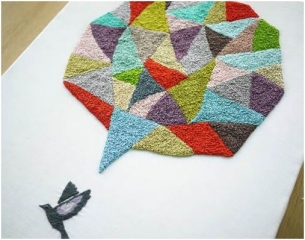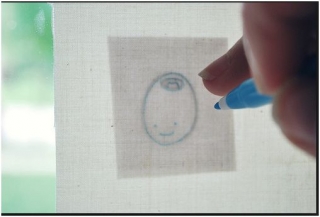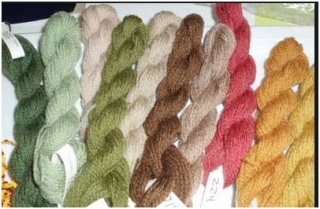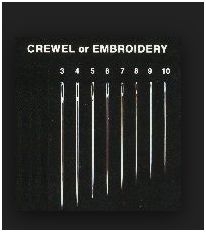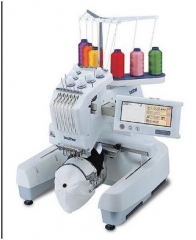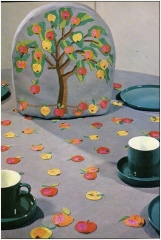If it wasn’t for our ancestors’ love of sewing, there would be no “modern” embroidery today and it seems that sewing is very much back in fashion. Here are some answers to frequently asked questions about embroidery:
What sort of material can you embroider on?
That depends on what you wish to use the piece for. You can pretty much embroider on almost anything, from paper to all sorts of fabrics. Whichever you choose, try to use high count fabrics so that your pieces age well and last a long time.
Do you have to stabilize the cloth?
It depends on the fabric. If you’re working with a t-shirt type of material or a light weight, stretchy fabric then I’d recommend putting a piece of woven cotton fusible interfacing on the back of the work to stabilize it.
How do you get the design onto a cloth?
There are several ways to transfer designs. You can use a light box and trace the design using a pencil and paper. You can sticky tape the design to a window and trace using the light. If you prefer, you can use iron erasable pens or dressmaker’s carbon paper. It’s really down to what you find is the easiest to work with.
There is a really easy-to-use product called transfer-eze which dissolves in water after you’ve stitched it on and as a bonus it stabilizes the fabric as you work.
There are numerous patterns that also come with iron-ons.
Do you need to separate strands of embroidery floss and how do you work out how many or what weight you need?
There are various kinds of flosses, such as crewel wools and perle cottons that come as a chunky yarn type of piece that doesn’t need separating. You also get six strand flosses which do require separating.
Try to choose the kind of floss or how many strands based on the look you want to achieve with your modern embroidery. If you want a heavy look or to fill a space quickly then pick a wool or perle cotton, but if you’re after an elegant style then I’d recommend strand floss. Silk creates a really luxurious effect. Test different things out to find the affects you want to achieve.
What needles should I use?
This depends on the floss you’re using and the type of embroidery you’re doing. A size 10 embroidery needle is great for stranded floss but crewel will require a crewel needle with a fairly large eye. A chenille needle works well with perle cotton.
You’ll notice that needles are numbered and the larger the number, the smaller the needle. Make sure the needle size you use is appropriate for the fabric and floss. So for example chunky floss will require a bigger eye. Have a variety of needles on hand and test which will work best for your project.
How do I make designs for embroidery machines?
Embroidery has really grown in popularity over the last few years, especially with the development of modern embroidery machines and hardware and software they come with.
Designs for the machines begin from an artwork that’s transformed into a digital format and uploaded into the machine.
If you wish to create your own designs, such as letters, symbols or landscape, begin by selecting a design that has a high quality image with as few colors as possible, or create your own with a drawing program.
Once you’ve decided on your design, upload the file into the embroidery software or scan it directly into the software. Be sure to upload the design in a format that’s compatible with your machine software.
Machine embroidery can be used to create personalized objects, embellish clothing and adorn home décor to give it a personal and stylish touch.

